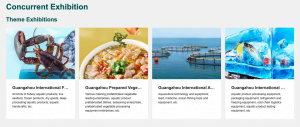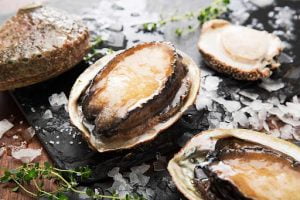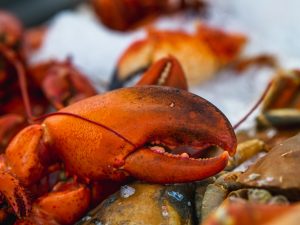[vc_row][vc_column][vc_column_text css=”.vc_custom_1632960997619{margin-bottom: 0px !important;}”]
China seafood trade analysis and outlook
30 September
The head of the China Aquatic Products Processing and Marketing Association (CAPPMA), the main marketing and trade body for China’s seafood industry, Mr Cui He, talks about China’s seafood import, export, and consumption outlook in this interesting discussion with seafoodsource.com:
Cui He is the secretary general of the China Aquatic Products Processing and Marketing Association (CAPPMA), the main marketing and trade body for China’s seafood industry. SeafoodSource spoke with Cui about how China’s seafood industry is coping with the COVID-19 pandemic, and how the country is transitioning from a low-cost producer of exports a market for domestic processors.
SeafoodSource: What is the current situation regarding seafood imports into China? Have there been disruptions due to COVID-19?
Cui: It’s not very normal at the moment. There are a number of issues. The volume of imports is down a considerable amount. Imports of seafood into China dropped by 15 to 17 percent in 2020 [and] the margin of decrease will be similar this year. The volume of imports has not recovered to its 2019 levels. The virus situation is still serious in some countries which export seafood to China. It is not well-controlled in some of the main export nations. The export controls in India and Vietnam and Ecuador are not strict enough and the virus is being detected in China on the packaging of the seafood. The need to inspect these shipments at Chinese ports has created a slowdown at the ports where the imports are checked. Some companies whose shipments are found to have virus traces on several different occasions have been restricted from the market for certain periods.
SeafoodSource: Will China’s seafood exports continue to drop?
Cui: Yes. The pandemic has shown the domestic market is growing faster than exports. Also the cost of freight has increased significantly. Exporter companies are discovering they can make better returns in the domestic market. In 2019 a container to the US east coast was USD 2,000 (EUR 1,700). Now it’s USD 10,000 (EUR 8,500). The other problem is global economic growth is unequal. For example, the Indian economy is not growing as well as before. This means less consumer power. A container of seafood sent to China cannot be filled for the return journey.
SeafoodSource: Have prices for seafood risen in China this summer?
Cui: Prices have remained stable for the important sea-water fish like turbot, grouper, and yellow croaker. But prices for freshwater products have continued to rise. Consumers in China’s inland provinces prefer freshwater fish, while the coastal provinces prefer marine fish. From March, we have seen the prices for carp and catfish rise to a surprising degree. But starting in August, which is the busy season for aquaculture production in China, the prices have started to drop again.
SeafoodSource: Do China’s domestic seafood or aquaculture companies see the ongoing difficulties of importers as an opportunity for them?
Cui: The pace of growth in China’s seafood imports and prices up to 2019 was really quite fast. Seeing the growth of the domestic Chinese seafood market, big Chinese seafood companies have two strategies. One is to build national channels for sales into the domestic market. The other strategy is to invest abroad. Evergreen has invested in Egypt and Saudi Arabia. Evergreen’s recently announced projects will focus on the domestic market. Evergreen was formerly an export-focused company. It has also in recent years reduced the percentage of its sales which go to export markets. It’s shifting to domestic sales.
SeafoodSource: How is China’s increased enforcement of environmental rules impacting domestic aquaculture production?
Cui: The Chinese government’s environmental policies have limited the production of companies whose production standards are not environmentally friendly. China now takes the approach [that] if we have satisfied the local appetites and hunger of the local population, there is no need to continue increasing production and we will rather protect our environment. Since the government started to implement its policies in 2017, many non-environmentally friendly aquaculture farms have exited the sector. Aquaculture farms that complied with the policy continued production.
Looking at this issue from another angle, we need to look at other countries, such as developed countries in Europe like Denmark, Scotland, and France. There the aquaculture companies use standards and systems. The big difference between developed countries and developing countries like China is the scale. In China, many of the aquaculture facilities are family operations. There are disorganized and environmentally-unfriendly facilities. We should study Europe. Family-operated farms won’t be able to adapt the modern facilities or equipment like [recirculating aquaculture systems]. Large enterprises can keep the high standards of production.
SeafoodSource: What are CAPPMA’s new projects and priorities?
Cui: We are keeping in very close contact with our members. We are helping them develop new strategies and to develop new products. We are developing new products for different consumers. We help them develop different products to suit different groups in society. Also, we help them develop offline and online marketing strategies. The products needed for offline and online sales are not the same. We research these together. We also work with our processing company members by helping them research the alternative products they can develop for different customers.
[In addition to] the domestic market, we observe closely the international markets. We take promotional events to inland cities like Changsha, Chongqing, and Xi’an to promote our members’ new products. There have not been any international shows like [Seafood Expo North America in] Boston or [Seafood Expo Global in] Brussels, but we have engaged with international partners online. We are also helping our members with marketing of seafood species which have become very popular in the domestic market, such as yellow croaker and crayfish. Marketing channels continue to change and evolve.
Cover Photo: Unsplash
September 17, 2021
You can read this week’s full STAG Newsbites Article Here





